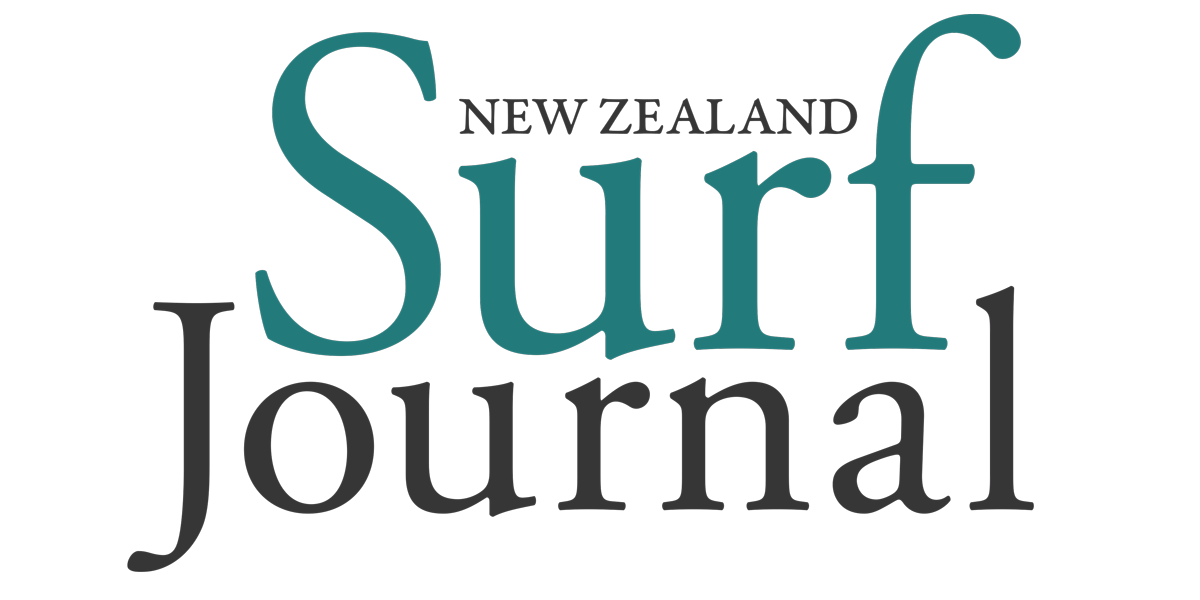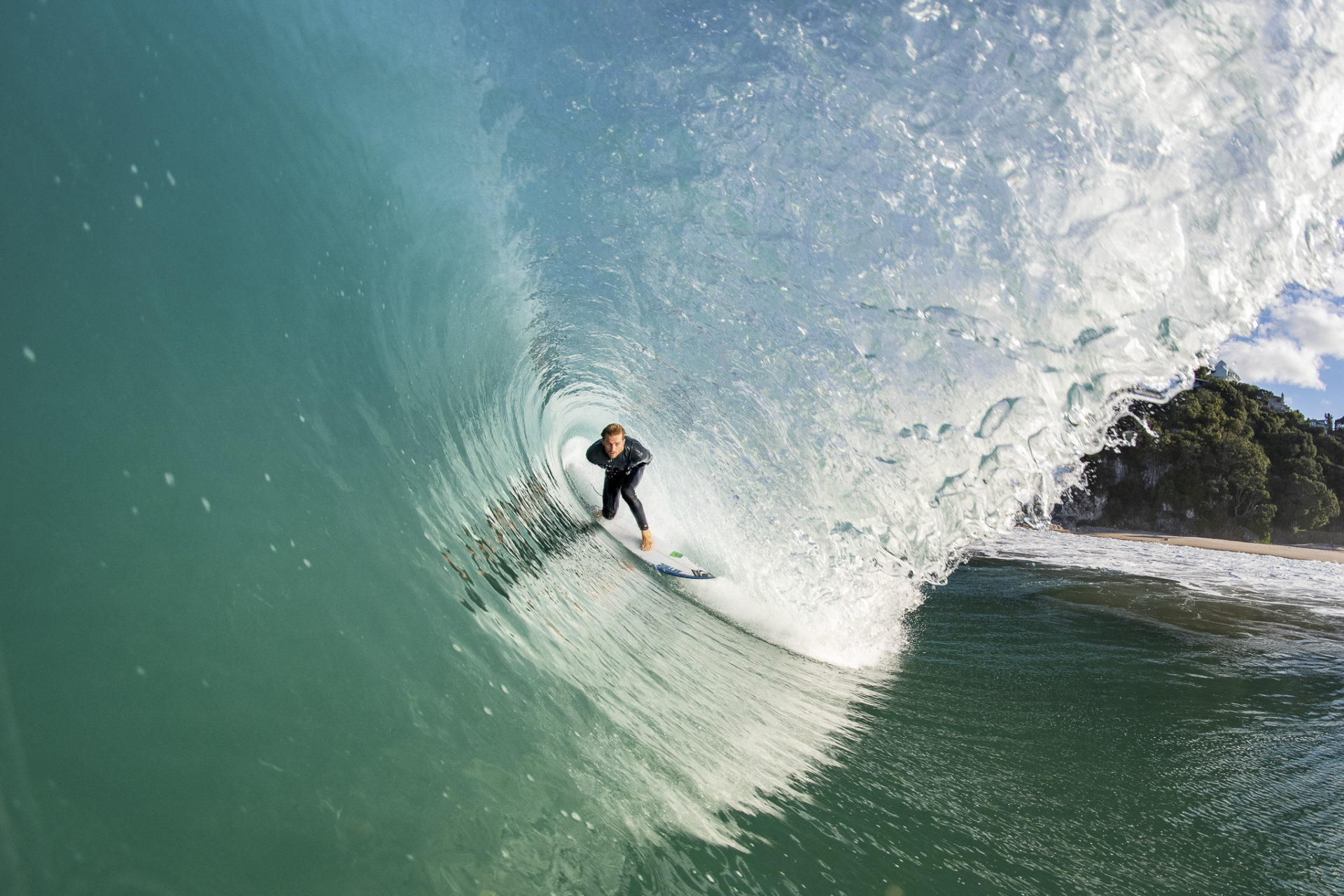Meet the French-speaking Spaniard chasing waves in New Zealand – not to surf them, but to photograph them. Jean Pierre Guillotin is bringing a fresh perspective to the waves and surfers of the North Island. New Zealand Surf Journal’s Derek Morrison caught up with 32-year-old JP during Auckland’s most recent lockdown.
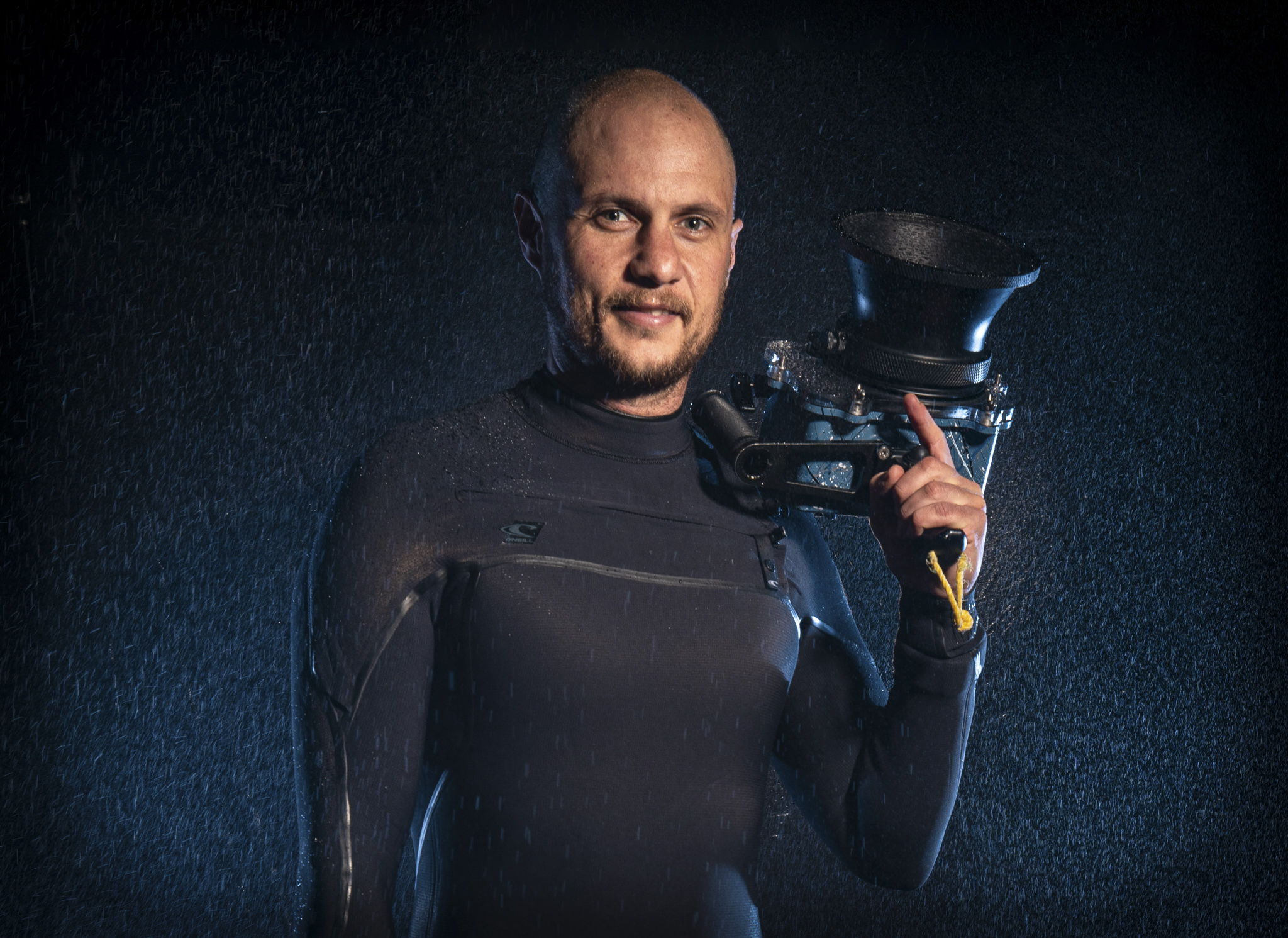
NZSJ: Tell me about your photography, JP. How did you get into it?
Jean Pierre Guillotin: When I was 18 my father bought me my first camera – a small digital one to use underwater. I was able to shoot just one frame at a time, so it was an excellent way to learn when to press the shutter. I started to shoot my friends, but nothing too serious, just for fun. I learnt to bodyboard in the Canaries as it is more popular and the waves are perfect for it, so I wanted to give it a chance.
Afterwards, my Mom bought me my first DSLR camera when I was around 20 … I didn’t have any idea how to use it. I remember putting the camera in manual mode to play with the shutter, touching buttons, and taking pictures to see how it affects the final image. After that, I shot a lot of landscapes and used the GoPro to film some of my friends between surfs.
When I was 22 I traveled around South Asia. I shot a lot of lifestyle and travel images during that time. After this trip, I went back home to work and saved some money. I had decided that I was ready to discover the world and visit more new places.
My father has influenced my passion for photography – he enjoys it as much as I do, and he has taken awesome pictures from his trips. That is probably where my enthusiasm for photography and traveling comes from.
Some great professionals here in New Zealand have also inspired me, like Bryce Wilson, Rambo Estrada, Cory Scott, Craig Levers, and Jereme Aubertin. I love how they capture the ocean. They have been doing it for a long time and they know the game so well. In general, there is a good vibe between photographers here – I have always felt welcomed.
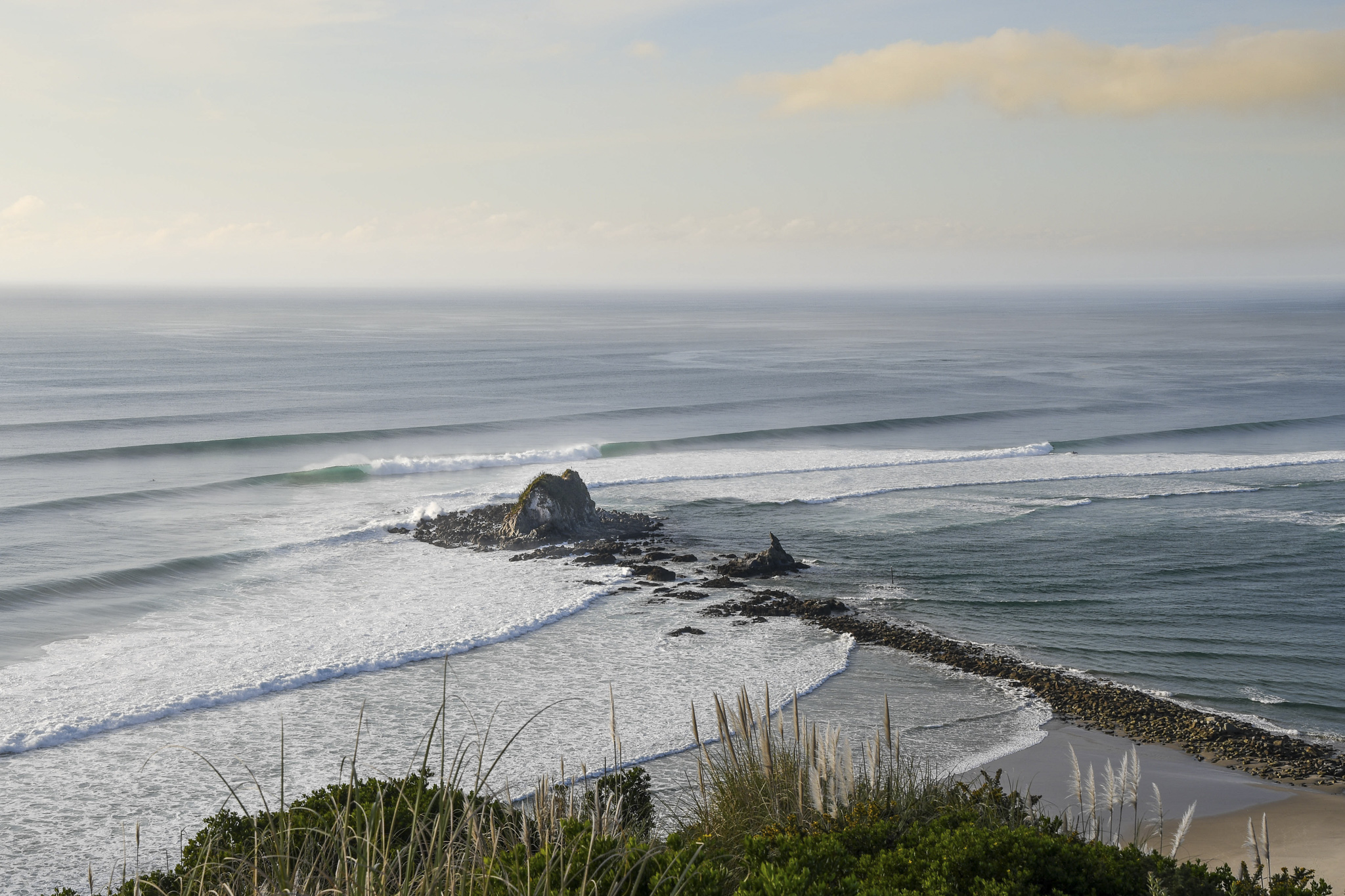
NZSJ: Where do you come from and how did the sea attract you?
Jean Pierre Guillotin: You might wonder why a Spanish guy has a French name, but I was born in the Canary Islands (Spain). My father is from France, and my Mom is from the islands. He moved to the Canaries before I was born, and we lived over there until I started traveling and ended up here in New Zealand. My grandfather was a fisherman and he used to take me on his boat for fishing. I’m not really into fishing, but I started to be attracted to the ocean.
When I was doing my internship in Fuerteventura, one of the islands, I stayed in the north, in a small village where there wasn’t much to do unless you practice water sports. So, I bought my first 6’4″ surfboard. It was really hard to ride it. Back home the waves are better for bodyboarding – most of them are shallow slabs, so unless you are a pro surfer, it’s hard to learn on those kinds of waves.
When I came to New Zealand, the first beach I went surfing at was Piha. Since then it is one of the places that I shoot the most and I’ve made good friends over there. The locals here are friendly and the landscape is amazing. There is a massive rock in the form of a Lion in the middle of the beach – it is so cool to shoot with that sort of background. Everywhere you go there is fantastic scenery and a lot of wildlife. I have been lucky enough to be able to be in the ocean with dolphins – that’s such a good experience. I feel very grateful to be here.
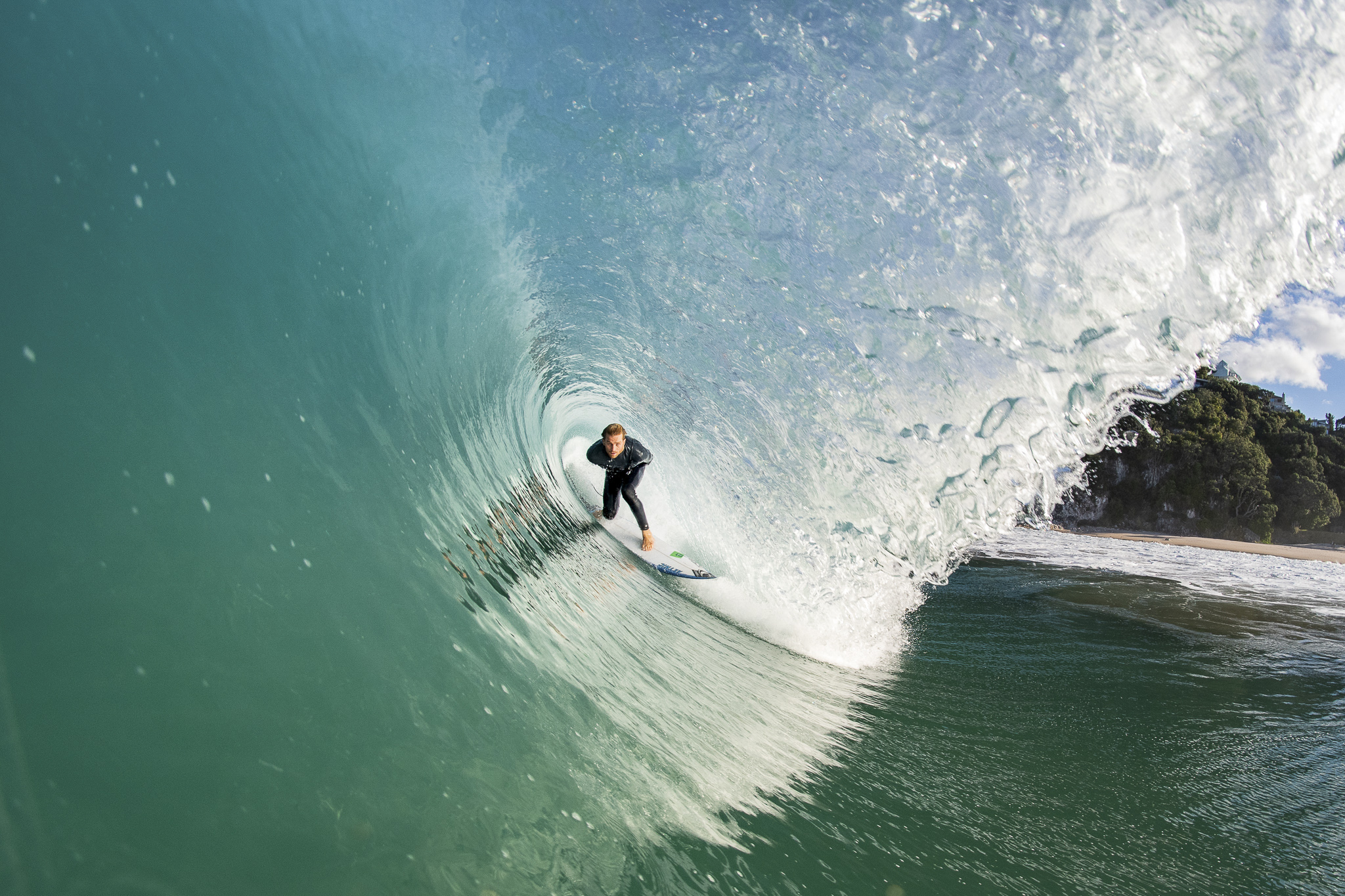
NZSJ: How long have you been shooting in the water and is that your go-to when shooting surf?
Jean Pierre Guillotin: I have been shooting in the water since I came to New Zealand seven years ago, and I’m so happy and grateful because that’s something I always wanted to do. When I traveled around Asia and Australia it was hard to move around with so much gear, especially if you just have a backpack with you. I had my GoPro as well, which was handy to use at any time.
I worked on a farm close to Darwin, and there were no waves at all. So, if you wanted to go for a swim, you had to deal with sharks, crocodiles and jellyfish. But there was one good thing about living there: I was just two hours away from Bali. So, when I had a couple of days off, I used to jump in a plane and go to the island of gods.
I moved to Margaret River for three months before coming to New Zealand. When I came here, I didn’t know much about where to go surfing. I didn’t have a car either, so I saved some money and I bought my first station wagon. That’s when I started to go to Piha again and again.
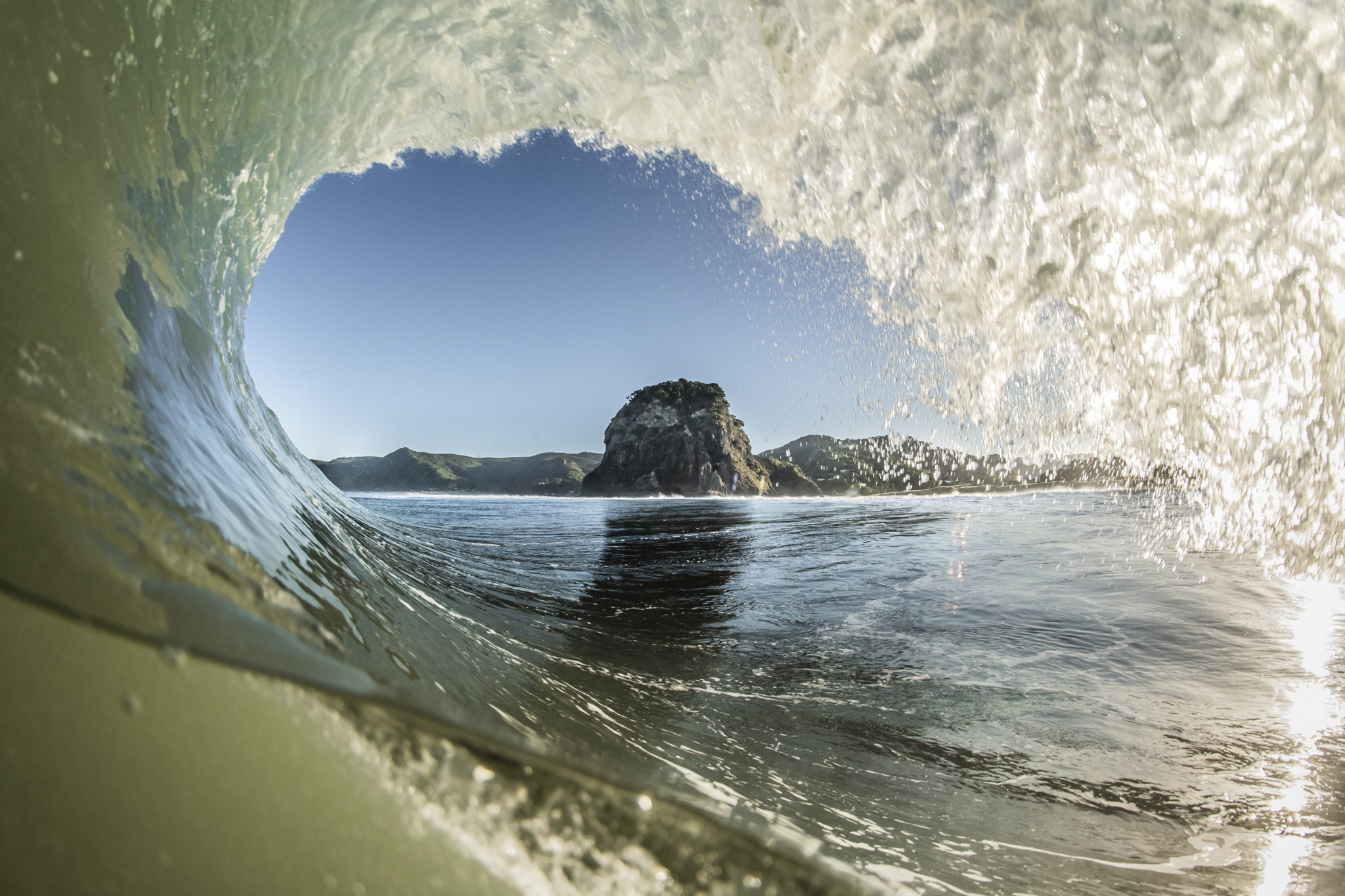
Then I bought my first water housing. I still clearly remember the first time I tried it. We had a nice swell on the way, and I thought it would be a good day to try it. I was a little nervous about swimming with the camera in such conditions, especially at Piha, which is well known for the currents. But when I came home and reviewed the photos, I was like, “wow!” And probably still to this day that was one of the best days I’ve had over there.
I love being in the water more than shooting from the shore. I think the connection with the surfers is totally different. Once you get a good shot of someone and we both paddle out – the smile on our faces – it is such an indescribable moment. Some days, I shoot from outside if it’s too big to swim or if I’m looking for a different angle, but I always rather be in the water.
Currently, I’m using a Nikon D500 and Salty water housing. The lens I use the most is the 16-80mm. I like it because it gives a wide angle and a good zoom range. I also love a good fisheye shot. I realised that it’s easier to use it when the wave breaks on the same spot and the currents aren’t too strong. I have used it many times on the West Coast and I miss a lot of the action trying to be in the position battling with the currents. If you get one good shot it will always be worth the effort. I recently got my 70-200mm. I like Rambo Estrada’s style and I think he is one of the best. He uses that lens often. So far, I love it. The only issue is that it is heavy once you put it in the housing, but I like the compression that it gives you in the shot.
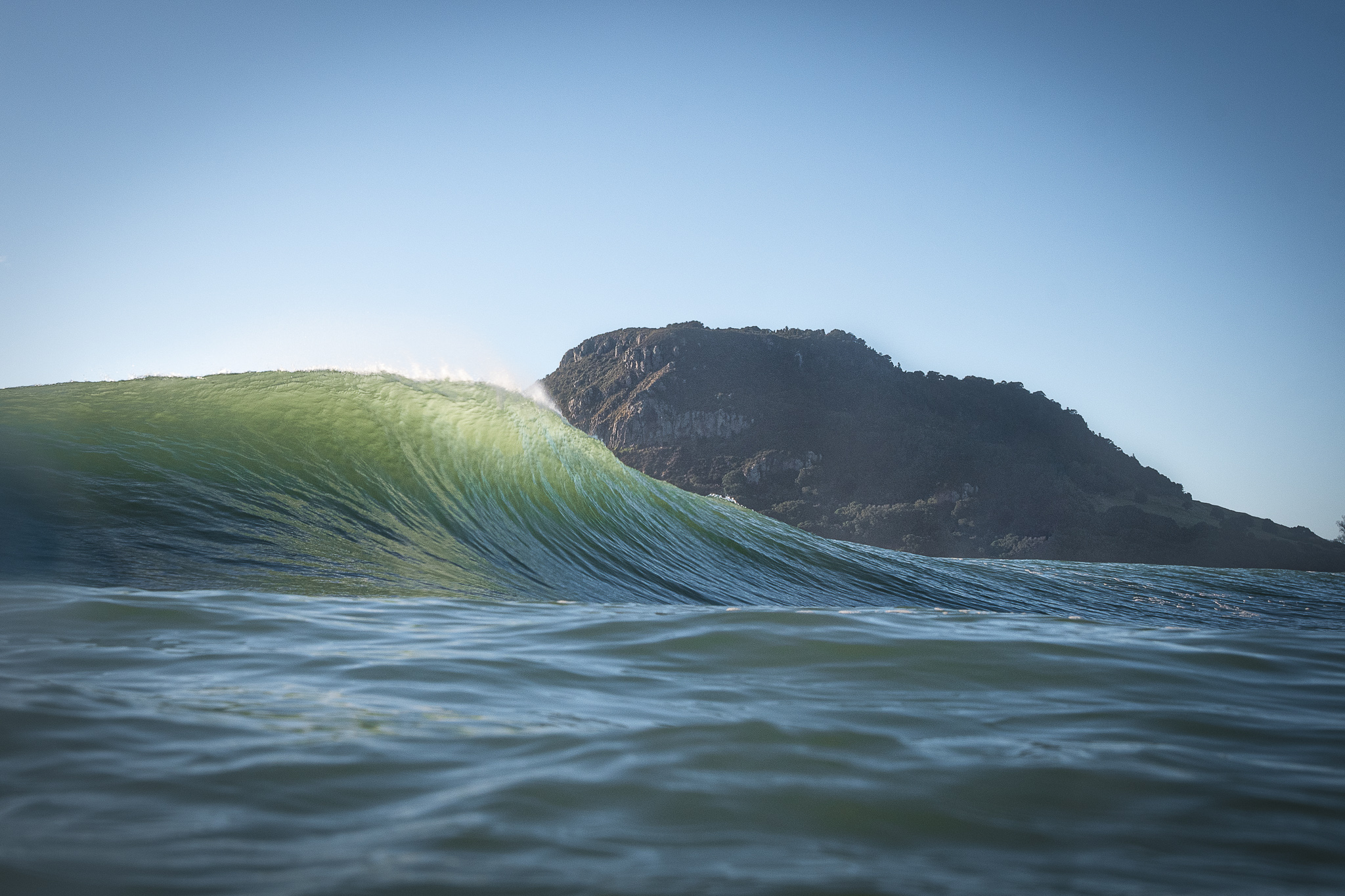
NZSJ: Tell me a bit about your creative process and what you’re looking for with your work?
Jean Pierre Guillotin: I’m always looking for images that stand out from the others – something that captures your attention and makes you look at the picture twice. I always get out even if it is not looking good from the beach. Sometimes you can make some magic, even if the conditions aren’t looking too promising. Most of the time I have an idea in my head, and I try it till I get it. It’s always good when you work together with the surfer, and you both have the same goal. That makes the job easier, but often the best pictures come without looking for them.
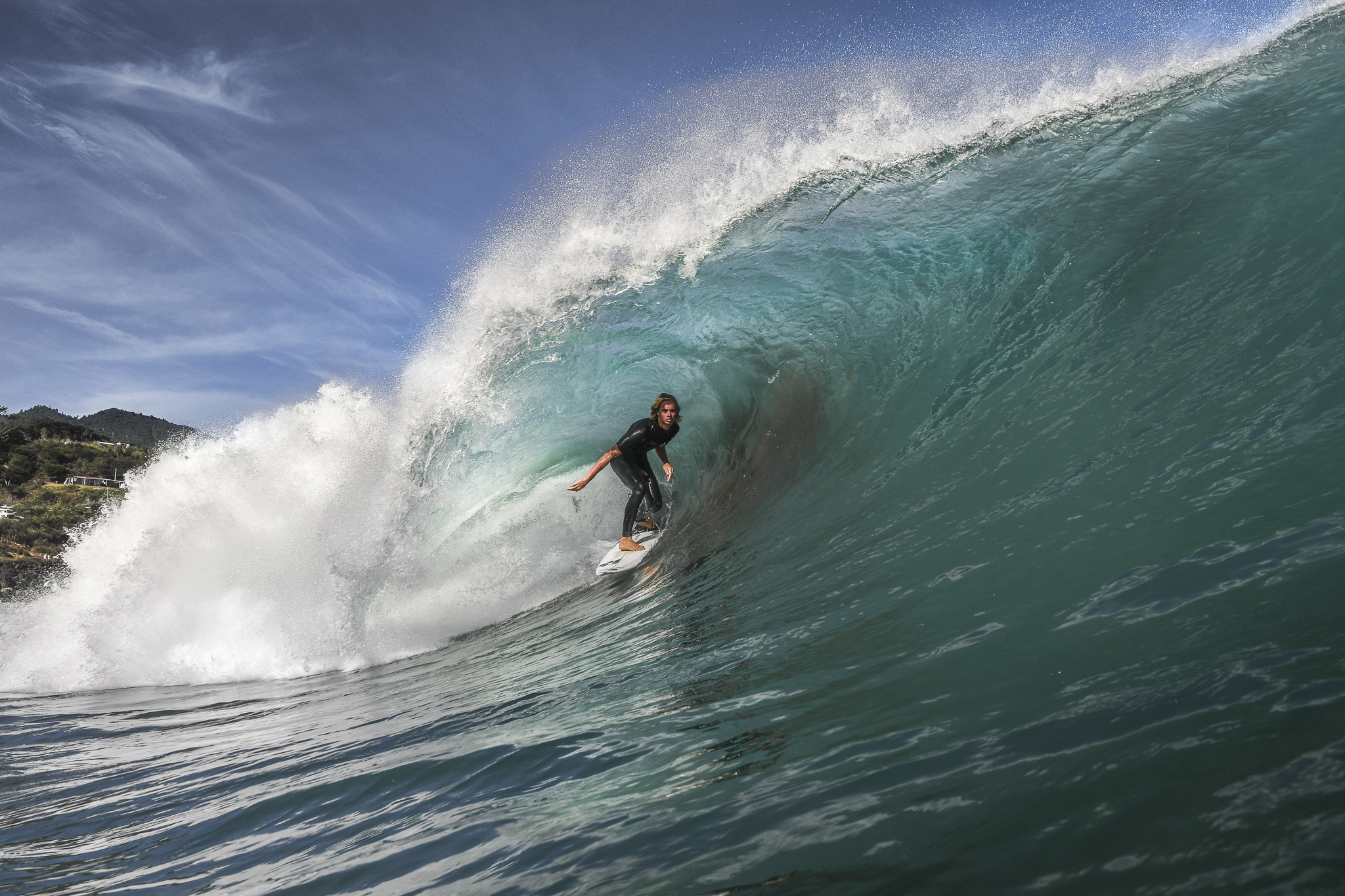
NZSJ: You’ve become renowned for chasing pumping waves, but surely that’s not that easy up there in the North Island? How do you manage that with your job?
Jean Pierre Guillotin: I have been chasing a lot of unicorns and some good waves as well! (Laughs) When I came here I didn’t know any spots, so I used to drive long distances finding nice places to shoot. I think in New Zealand you might need a little bit of local knowledge to know when it’s going to be good. Most of the waves are beach breaks, so it’s not easy to know if there are some favourable banks, or which tide works better because it changes all the time. Back home, it is all slabs or points breaks, so once you know the swell direction, wind and tides you’re good to go.
I work in a restaurant and usually start work around 2pm. So it is the perfect job if you want to combine it with surf photography. Often I will leave Auckland early, drive two-to-three hours to get to the spot, be in the water at first light, shoot for a couple of hours and then drive back home, get a shower and go straight to work. It’s pretty full-on, but if you score, it will be one of the best days at work and that happiness stays for the whole week.
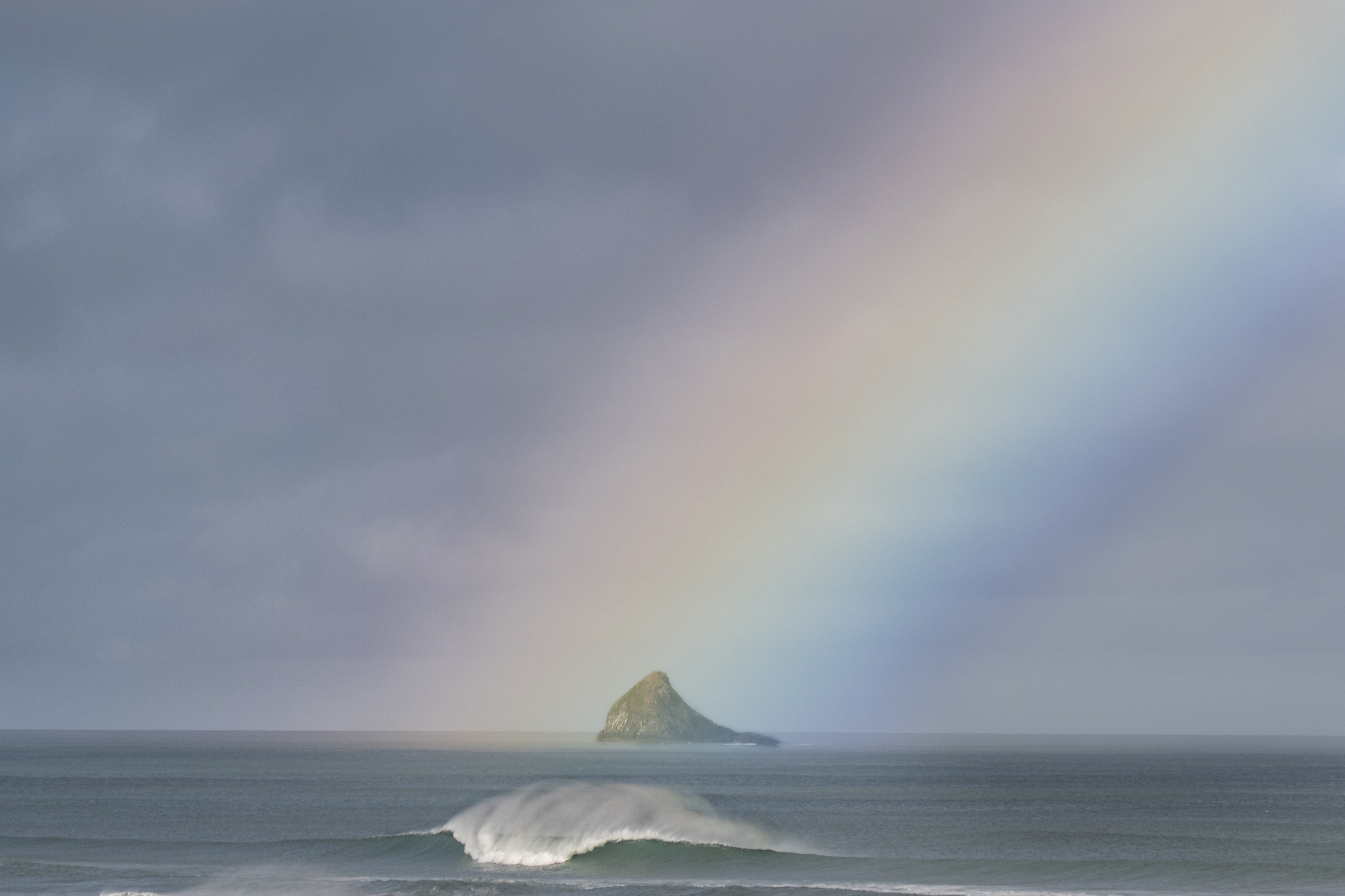
NZSJ: Tell me bit about where you want to take your photography?
Jean Pierre Guillotin: My goal is to be a full-time photographer in the future. I want to keep improving, and learning more of the technical aspects. I know that to make a living from surf photography is tough these days. I have been trying to learn other skills in photography and focus on other extreme sports. The surf is not always terrific, so it’s nice to have other options.
I don’t mind doing another type of photography if that’s what I need to do to make a living as a photographer. I still enjoy the process of getting good images, no matter what the subject is. However, I believe most surf photographers do weddings, family or commercial work to pay the bills.
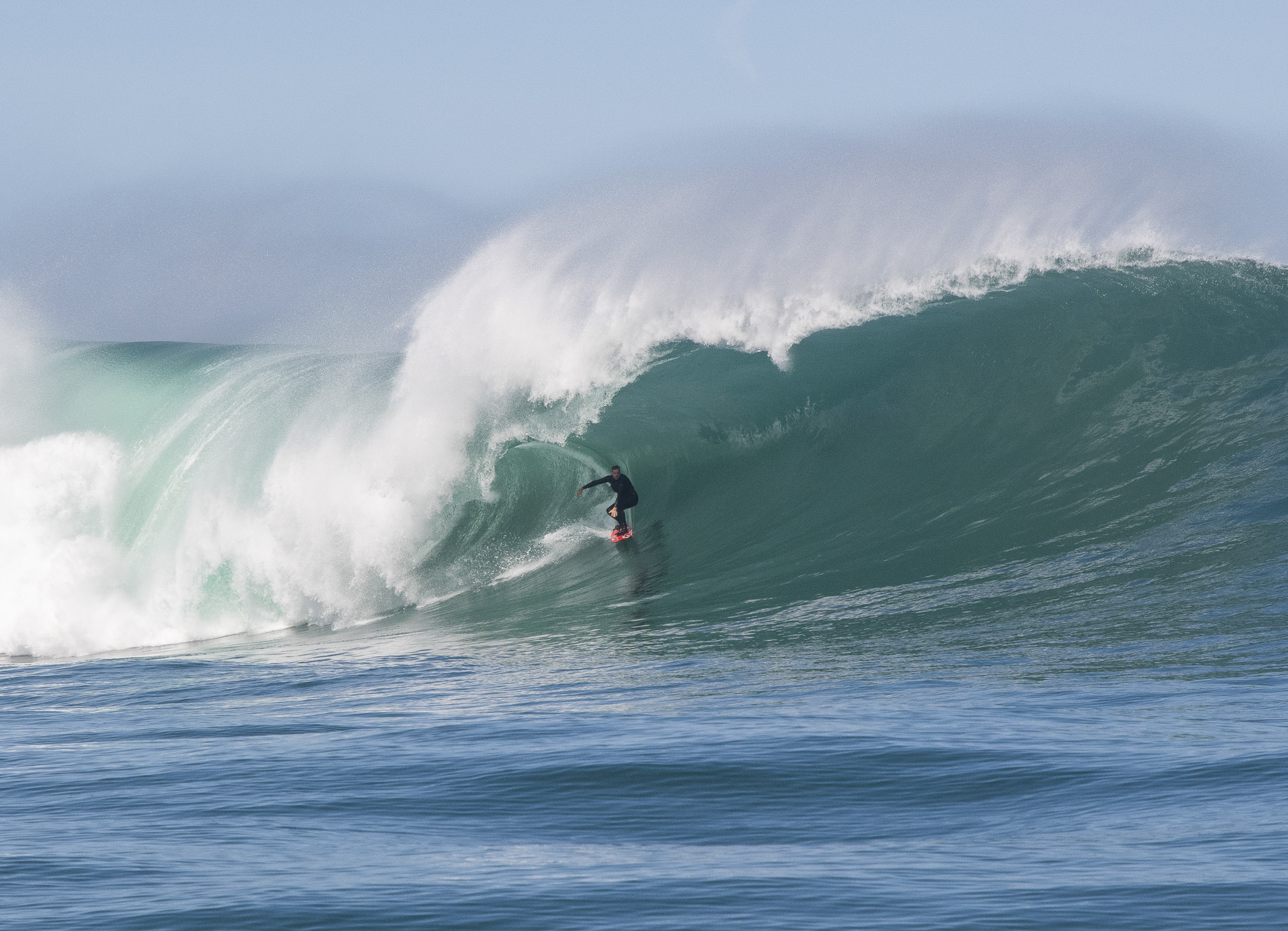
NZSJ: How do you stay motivated for your creative photography work in Auckland and especially through the lockdowns?
Jean Pierre Guillotin: It’s not too bad to be in lockdown, though I would rather be out shooting. We need to see the lockdowns positively. Otherwise, it is easy to get mad being at home all day. These days there is so much content online that you can watch and learn. So, it’s a good time to learn and practice. I have a home studio, so it’s been incredible that I can learn more about lighting.
I have done a couple of jobs here and there and I know it takes time to build your photography career. The only way to get better at photography is to test your gear, keep shooting, and learn from your mistakes.
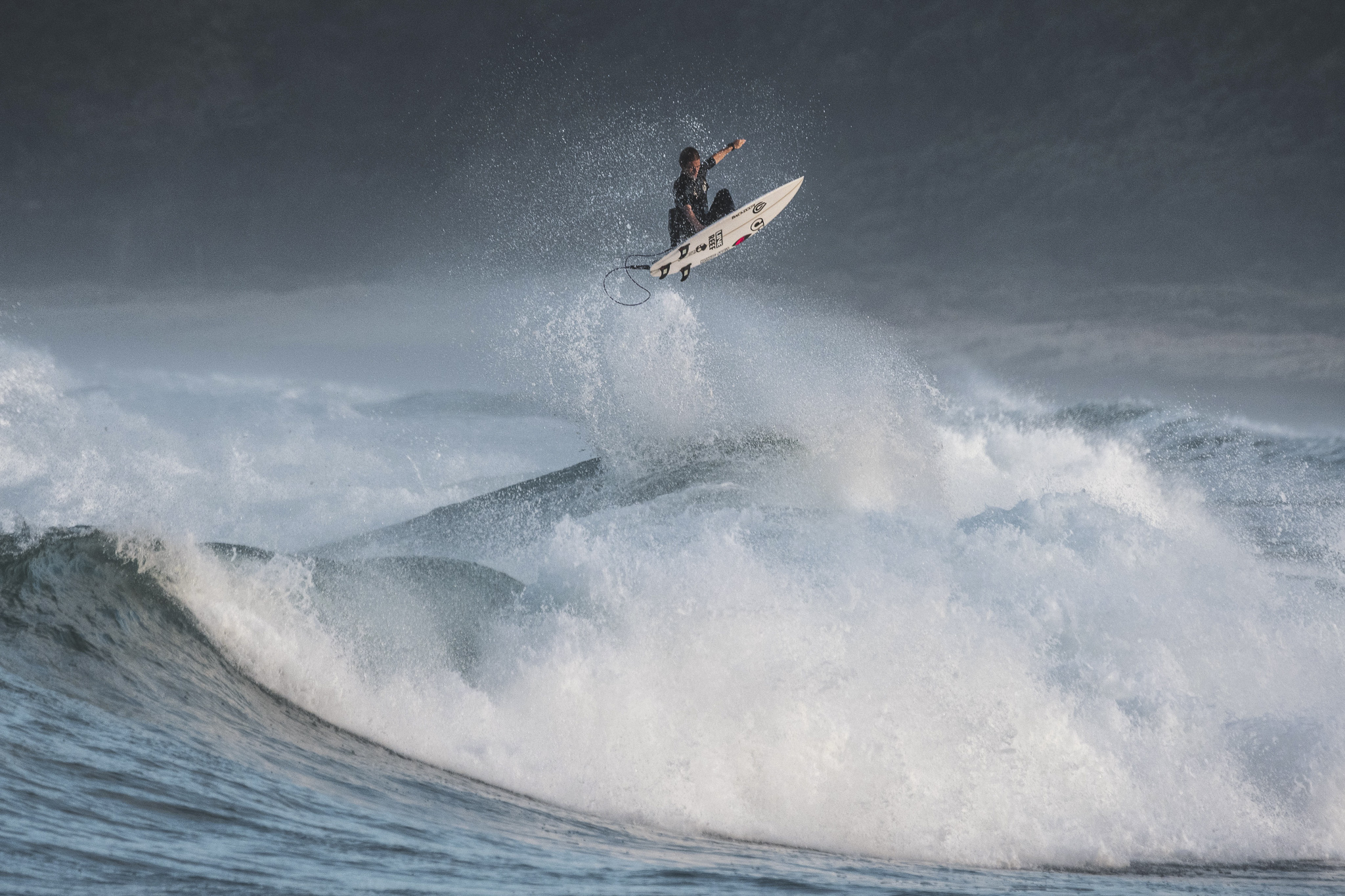
NZSJ: Tell me bit about your philosophy for life and where you’d like to be in this world.
Jean Pierre Guillotin: I love traveling and discovering other cultures and different ways to live. My goal is to work here in New Zealand during the summer and travel to Indonesia or the Pacific Islands when the winter comes. It is an excellent way to escape from the cold, and it’s the right season for waves over there, so it’s a win-win. Also, adopting this sort of life will help me to become a better photographer as I will be chasing good swells and shooting some quality waves. But at this point, it’s more an idea than a reality given our current situation.
NZSJ: You can invite any three people in the world to dinner – who would they be and why?
Jean Pierre Guillotin: At this point, it would be my family (they can share one seat) Laughs. I miss them so much. Living far from home is never easy. With this coronavirus going on it’s hard to travel. The other two would be Kelly Slater and photographer Clark Little. They are both legends of the surf and photography industry. Between both, they have so much knowledge about the ocean so it will be cool just to listen to all the histories they have to tell. We’d have dinner somewhere in Hawaii and then go for a surf/shoot with them. That would be a dream.
NZSJ: Thanks JP!
Jean Pierre Guillotin: Firstly, I would like to thank you Derek. This is a privilege to be interviewed for New Zealand Surf Journal. I would like to thank Camila, my partner, for supporting me in this journey and all my friends that I have made in New Zealand and back home – they have been awesome. I hope to bring some more great images in the future to share with the New Zealand Surf Journal community. Cheers, JP
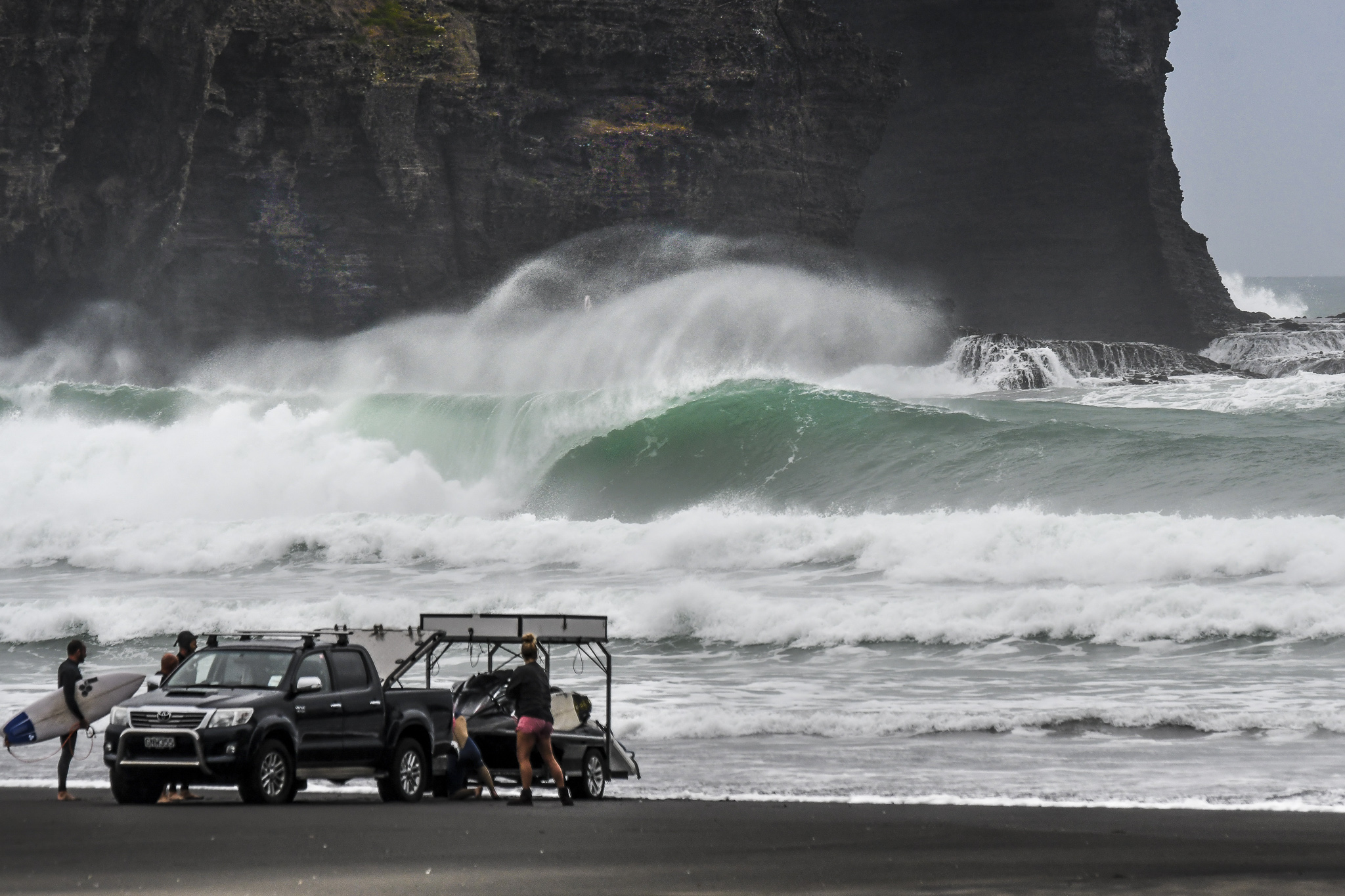
This day was raining and windy. In many cases, the best pictures come without looking for them. Photo: Jean Pierre Guillotin 
I knew there was a nice swell on the way and I thought it would be a good day to try my new housing. I was a little nervous about swimming with the camera in such conditions. Photo: Jean Pierre Guillotin 
On the pulse. Photo: Jean Pierre Guillotin 
Zen Wallis casual as. Photo: Jean Pierre Guillotin 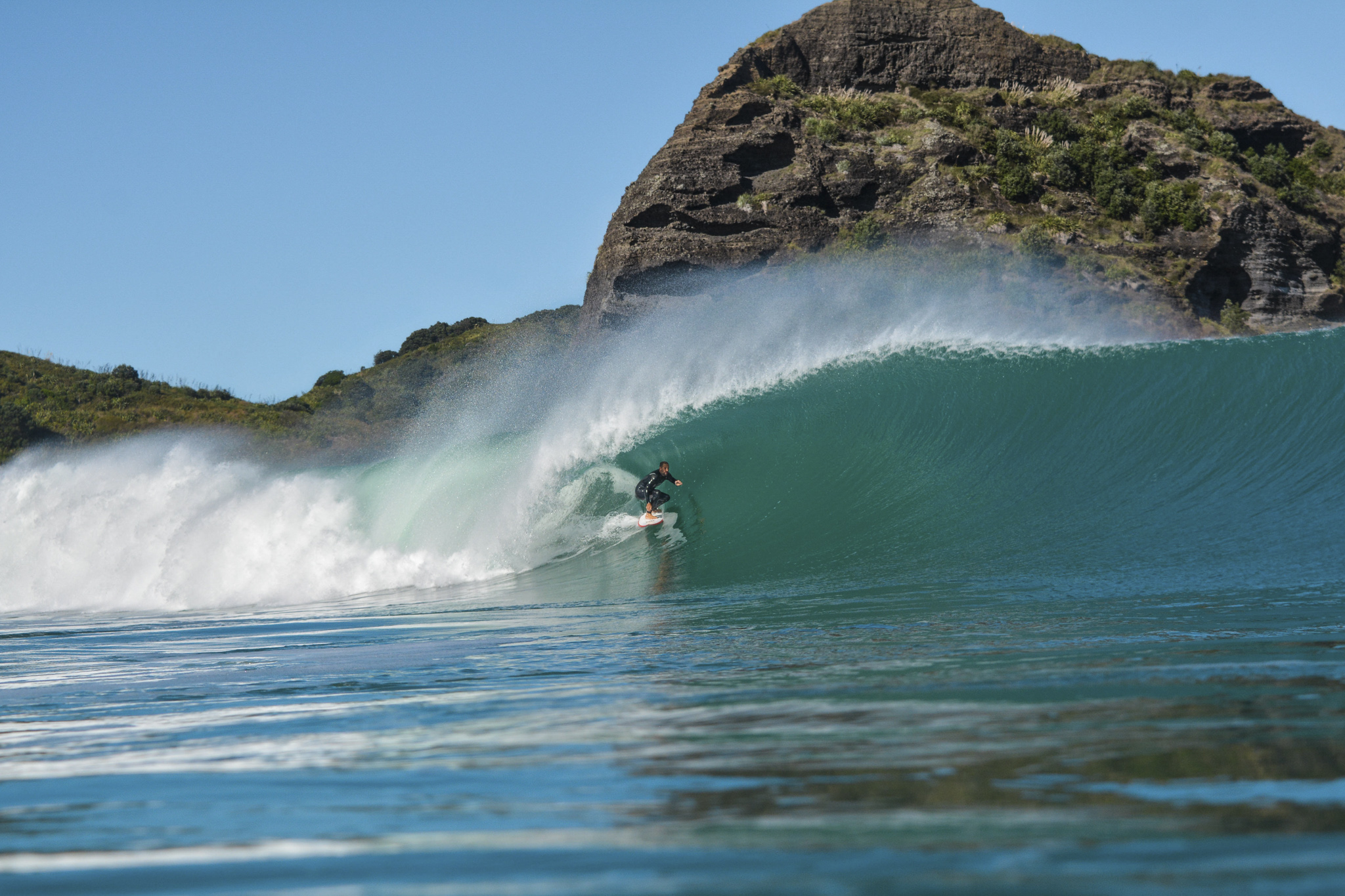
Dave Pateman locked in on Piha bar, one of my favourites shoots from this place. Photo: Jean Pierre Guillotin
